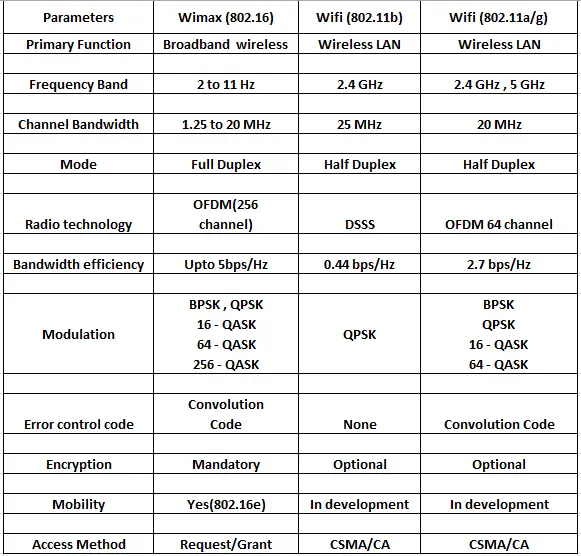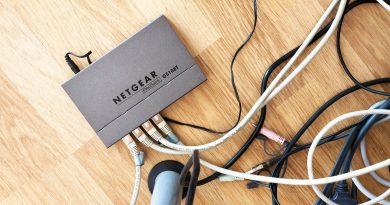Wimax vs Wifi Technology (Comparison of IEEE 802.16 and 802.11 Standards)
Untill now , we have been understanding the basic working of various IEEE standards i.e 802.11, 802.15, and 802.16 (wifi , Bluetooth and WiMAX) in detail . Now let us compare the two most important wireless standards i.e. IEEE 802.11 and 802.16 standards (WiMAX vs wifi tech).
IEEE 802.16 framework (Wimax) is similar to IEEE 802.11 standard (Wifi) , but at a much larger scale and at faster speeds. We will compare these two in each of the determining factors below :
1. IEEE Standard : Wifi is based on 802.11 standard and Wimax is based on the 802.16 standard .
2. Range : Wifi typically provides local network access for around a few hundred feet with speed of upto 54 Mbps . A single Wimax antenna is expected to have a range of upto 40 miles with a speeds of 70 Mbps or more.
3. Scalability : Wifi users scale from one to tens with one subscriber for each customer premise equipment (CPE) . It has a fixed channel size of 20 Mbps. On the other hand , WiMAX is designed to efficiently support from one to hundreds of CPE’s with unlimited subscribers behind each CPE. Flexible channel sizes from 1.5 to 20 Mhz .
4. Spectral Efficiency and Bitrate (MAX) : Wifi works at 2.7 bps/hz and can peak up to 54 Mbps in 20 Mhz channel. For WiMAX, it works at 5 bps/hz and can peak up to 100 Mbps in 20 Mhz channel.
5. Quality of Service : Wifi doesn’t guarantee any QOS but Wimax will provide some levels of QOS.
Wimax vs Wifi Main Points In Tabular Format
Let us summarize each point in below table now :

BSNL Wimax In India
In India , BSNL offers CPE’s (customer premise equipment) for outdoor (rs 4599) , indoor (rs 3599), and USB dongle (rs 2499) applications. It provides data rate upto 7 Mbps. Its range is about 15 km for rural areas and 4 km for urban areas.
That’s all from this post. From the next post onwards we will start discussing the physical layer networking devices. The physical layer defines the mechanical, electrical, and timing interfaces to the network. So stay tuned.

Aric is a tech enthusiast , who love to write about the tech related products and ‘How To’ blogs . IT Engineer by profession , right now working in the Automation field in a Software product company . The other hobbies includes singing , trekking and writing blogs .





